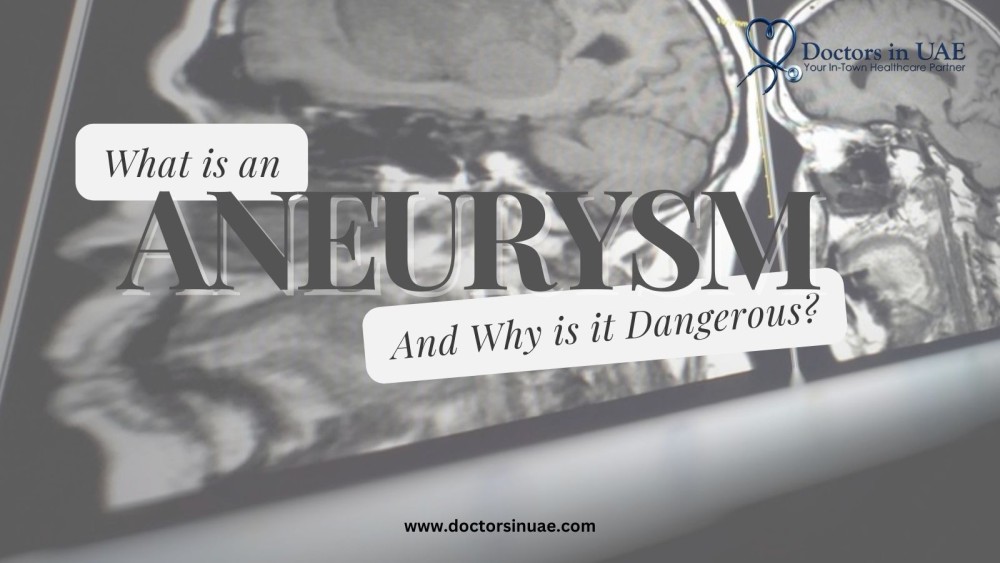
What is Aneurysm? And Why It Is Dangerous?
What is an Aneurysm and Why is it Dangerous?
An aneurysm is a localized, abnormal ballooning or dilation of a blood vessel due to a weakness in the vessel wall. This condition can develop in any blood vessel, but it most commonly occurs in the arteries, especially the aorta (the main artery carrying blood from the heart to the rest of the body) and the blood vessels in the brain. The primary concern with aneurysms is their potential to rupture, which can lead to life-threatening complications.
Types of Aneurysms
Aortic Aneurysms: These occur in the aorta and are classified into:
- Thoracic Aortic Aneurysms (TAA): Occur in the chest area.
- Abdominal Aortic Aneurysms (AAA): Occur in the abdomen.
Cerebral Aneurysms: Also known as brain aneurysms, these occur in the blood vessels supplying the brain.
Peripheral Aneurysms: These occur in arteries other than the aorta or brain, such as those in the legs, arms, or neck.
Why is an Aneurysm Dangerous?
- Risk of Rupture: The most significant danger of an aneurysm is the risk of rupture. A ruptured aneurysm leads to internal bleeding, which can be catastrophic and often fatal. For example, a ruptured cerebral aneurysm can cause a hemorrhagic stroke, leading to severe brain damage or death.
- Blood Clots: Aneurysms can promote the formation of blood clots inside the affected artery. These clots can break loose and travel to other parts of the body, causing blockages (embolisms) that can lead to strokes or other serious complications.
- Pressure on Surrounding Structures: As an aneurysm grows, it can press on surrounding tissues and organs, causing pain and functional impairments. For instance, an abdominal aortic aneurysm might press on the intestines or spinal structures, leading to pain or gastrointestinal issues.
- Reduced Blood Flow: An aneurysm can disrupt normal blood flow, reducing the amount of oxygen and nutrients delivered to tissues downstream from the aneurysm.
Symptoms to Watch For
Many aneurysms do not cause symptoms until they are large or rupture. When symptoms do occur, they vary depending on the aneurysm’s location:
- Aortic Aneurysms: Symptoms might include deep, constant pain in the abdomen, back pain, or a pulsating sensation near the navel.
- Cerebral Aneurysms: Symptoms of a ruptured aneurysm include a sudden, severe headache, nausea, vision impairment, loss of consciousness, and neck stiffness.
- Peripheral Aneurysms: Symptoms might include pain, a lump, or a pulsing feeling in the affected area.
Prevention and Management
While some risk factors like age and genetics cannot be modified, lifestyle changes and medical interventions can significantly reduce the risk of developing aneurysms or prevent complications from existing ones:
- Control Blood Pressure: High blood pressure is a major risk factor for aneurysms. Managing it through medication, diet, and exercise is crucial.
- Avoid Smoking: Smoking weakens blood vessel walls. Quitting smoking reduces the risk of aneurysms.
- Healthy Lifestyle: Maintaining a healthy diet, regular exercise, and managing cholesterol levels are important.
- Regular Screening: For individuals with risk factors, such as a family history of aneurysms, regular medical check-ups and imaging tests can help detect aneurysms early.
An aneurysm is a serious condition due to its potential to rupture and cause life-threatening complications. Understanding the risks, recognizing the symptoms, and taking preventive measures are key to managing this hidden threat. Regular medical check-ups and a healthy lifestyle can significantly reduce the risk and improve outcomes for those diagnosed with an aneurysm.





Add a Comment